[/caption]
The Atlas V rocket that will power NASA’s new Juno science probe to Jupiter was rolled out to the launch pad at Space Launch Complex 41 and now sits poised for blastoff on Friday, Aug. 5 at 15:34 UT (11:34 a.m. EDT) from Cape Canaveral Air Force Station in Florida.
The Atlas V booster rocket was pushed out of its protective hanger, known as the Vertical Integration Facility, and towards Pad 41 this morning starting at 8:01 a.m. and took about 40 minutes to reach its destination.
Weather forecasters continues to call for a 70 percent chance of favorable conditions at launch time, but the approach of Tropical Storm Emily could throw a wrench in NASA’s plans depending on the track following by the storm over the remaining prelaunch period.
According to continuing weather updates, Emily is dissipating.
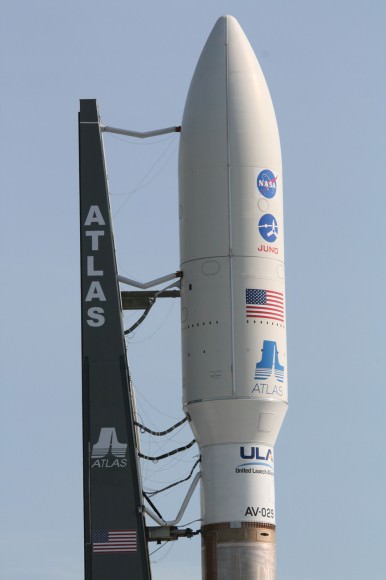
Managers approved Juno for flight at this morning’s Launch Readiness Review. The 4 ton Juno spacecraft will embark on a five year trek to Jupiter, our solar system’s largest planet and seek to understand the ingredients necessary for planetary formations.
Juno is perched inside a 5 meter diameter payload fairing and mated to the most powerful version of the Atlas V rocket – an Atlas 551 – with 2.4 million pounds of liftoff thrust. The 20 story tall Atlas 551 uses a standard Atlas booster with five solid rocket boosters in the first stage and a single engine Centaur in the second stage.
The launch window extends for 69 minutes.
The Atlas V is built by United Launch Alliance (ULA).
Juno will orbit Jupiter 33 times and search for the existence of a solid planetary core, map Jupiter’s intense magnetic field, measure the amount of water and ammonia in the deep atmosphere, and observe the planet’s auroras. Each orbit lasts 11 days
The spacecraft will provide the first detailed glimpse of Jupiter’s poles via a specially designed camera. The elliptical orbit will allow Juno to avoid most of Jupiter’s harsh radiation regions that can severely damage the spacecraft systems.
See my photo album from the launch pad published here.
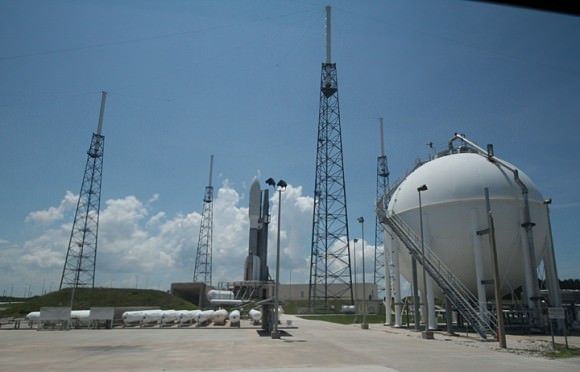
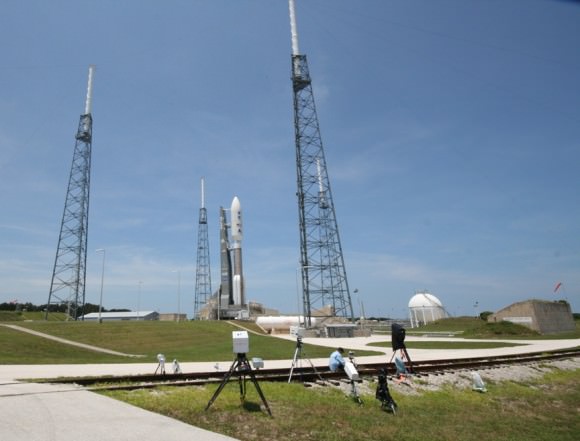
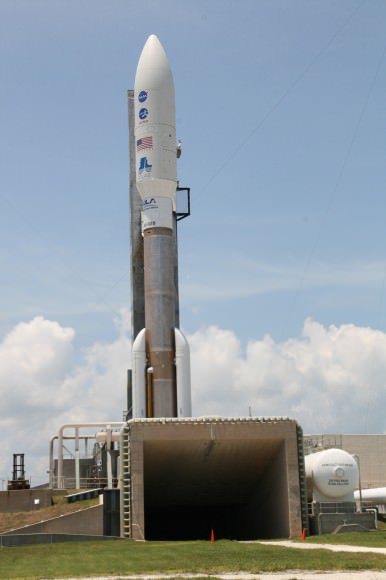
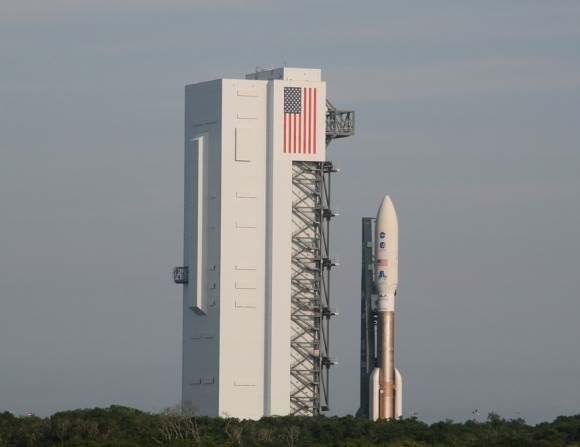
Read my continuing features about Juno
JUNO Orbiter Mated to Mightiest Atlas rocket for Aug. 5 Blastoff to Jupiter
Solar Powered Jupiter bound JUNO lands at Kennedy Space Center for blastoff

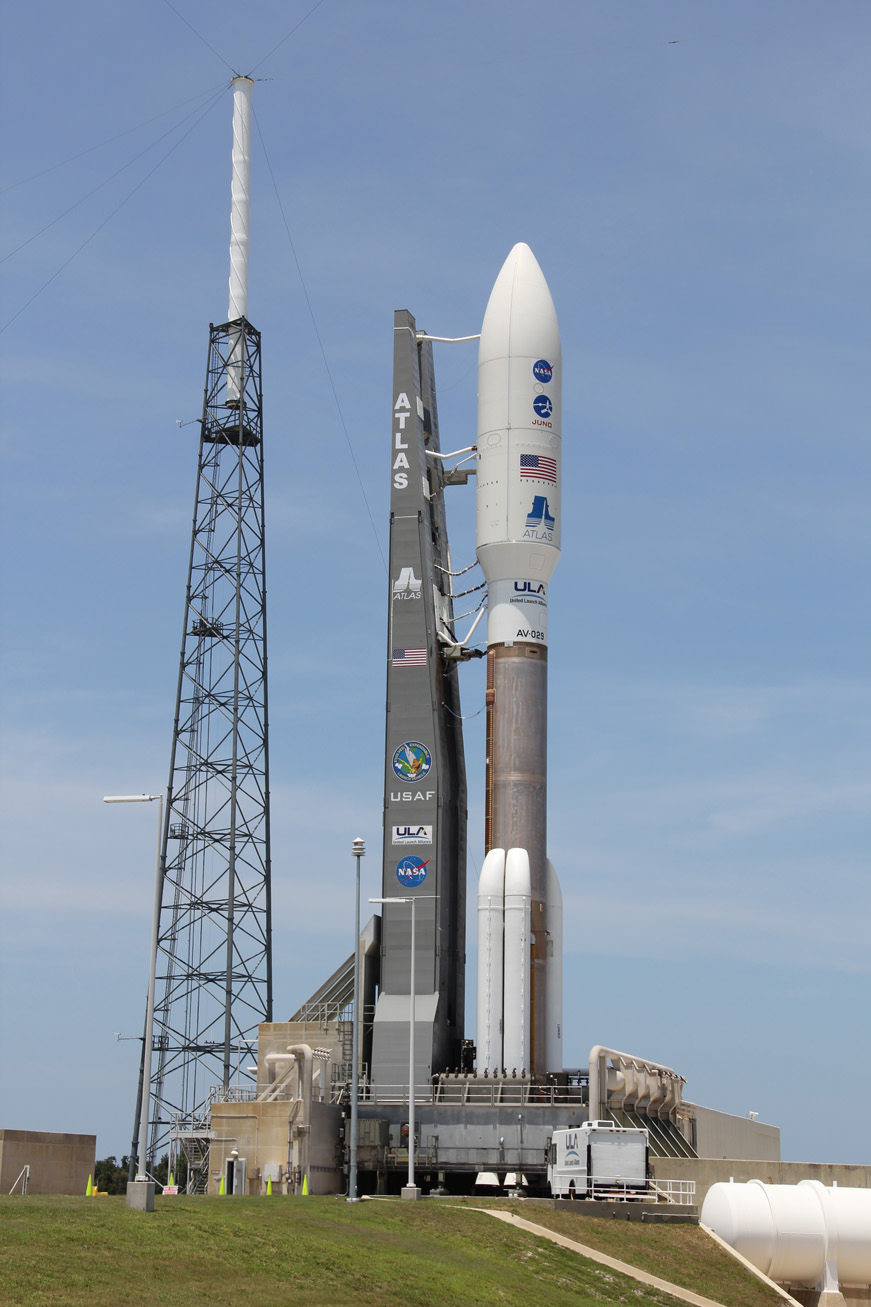
Please, please, please – Universetoday goes global so could the writers of such articles please stick to convention and at least give us relevant times in UTC in addition to local time.
Hey, you spelled Through the wrong way. you know, homonym stuff, it’s threw.
And i cant wait to find out what JUNO finds out!
@RichardXanadu: If I am not wrong, it should be 3:34 UTC .